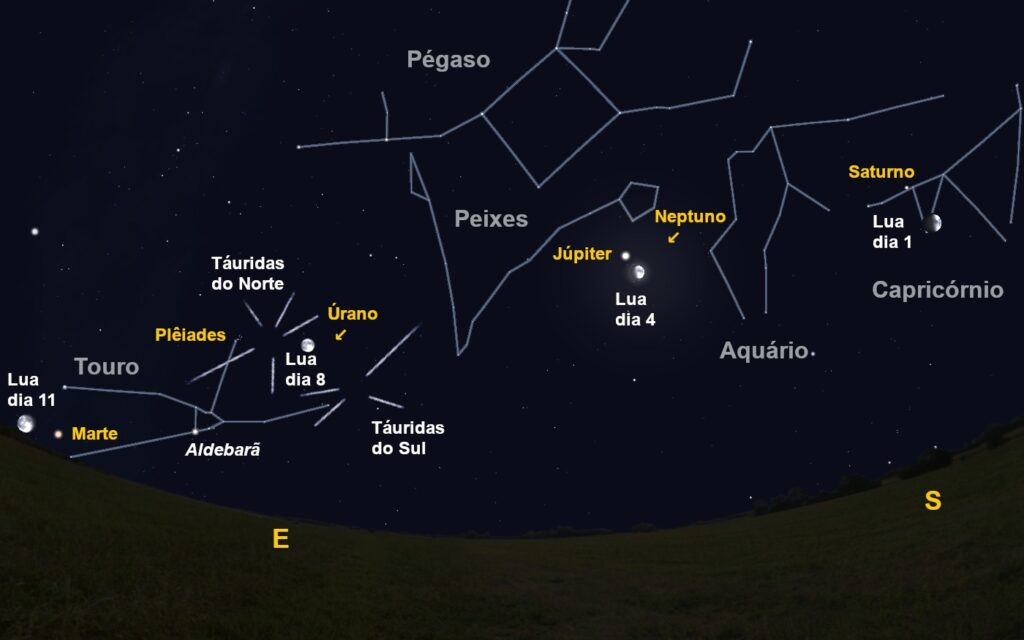The first dawn of the month of November coincides with the crescent moon, however this lunar phase implies that the Moon can only be observed at the end of the following afternoon. On this day, the Moon appears next to the planet Saturn in the constellation of Capricorn.
Two days after this anniversary, the 65th anniversary of the launch of Sputnik 2 will be celebrated, the second object built by humanity to orbit the Earth, and the first to take an animal on board: the famous dog Laika.
On the night of the 4th, the Moon will be seen next to the planet Jupiter, which, these days, is between the constellations of Aquarius and Pisces.
The Full Moon will arrive at 11 am on the 8th of November. The alignment between the Sun, Earth and Moon will give rise to a total lunar eclipse that, given the time, will not be observable in Portugal.
On the 9th the planet Uranus will be in opposition, the diametrically opposite position of the Sun. Thus, Uranus will find itself on the threshold of what can be seen with the naked eye in a sky completely free of light pollution, something that is increasingly rare these days.
On this same day, the Moon will be located next to the Pleiades star cluster (or Seven-Star), a cluster of stars that formed in the same molecular cloud about a hundred million years ago and that seem to swarm the back of the constellation. of Taurus.
On the 11th, the Moon will have reached the tip of the horns of this same constellation, from where, these days, we also find the planet Mars. This day marks the 40th anniversary of the fifth Columbia shuttle mission, the first involving the launch of satellites from this type of space vehicle.
In the current month. the activity peaks of several stelae showers occur. The Southern Taurids (on the 5th) and the North Taurids (on the 11th) showers, supposedly originated by the comet 2P/Encke, are relatively weak, not exceeding half a dozen meteors per hour.
On the other hand, on the night of the 17th, there will be the peak of activity of another shower of stars three times more intense than the two previous ones: the Leonidas.
The crescent moon will take place on the 16th, while the new moon will occur on the night of the 23rd. This last ephemeris will coincide with the 45th anniversary of the launch of the meteorological satellite Meteosat 1.
The planet Mercury will reappear in the evening skies from the 25th.
On the penultimate day of the month, the Moon will pass again close to Saturn, but this time the crescent moon will only take place on the following day.
Good remarks!



















Comments